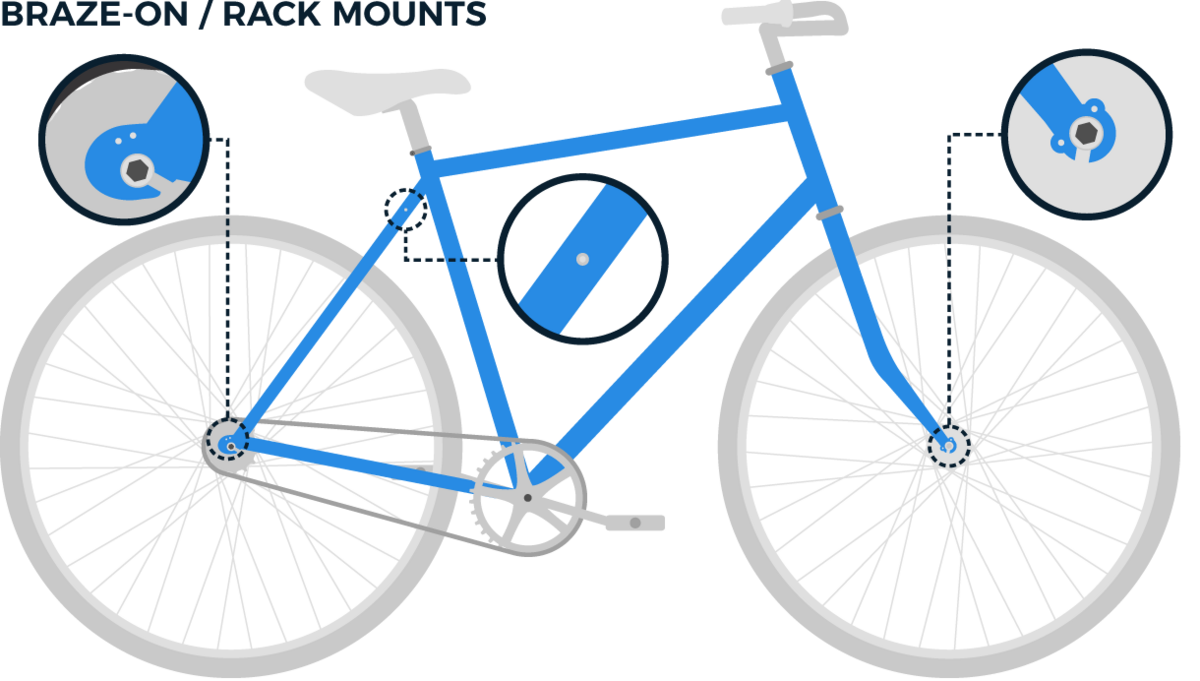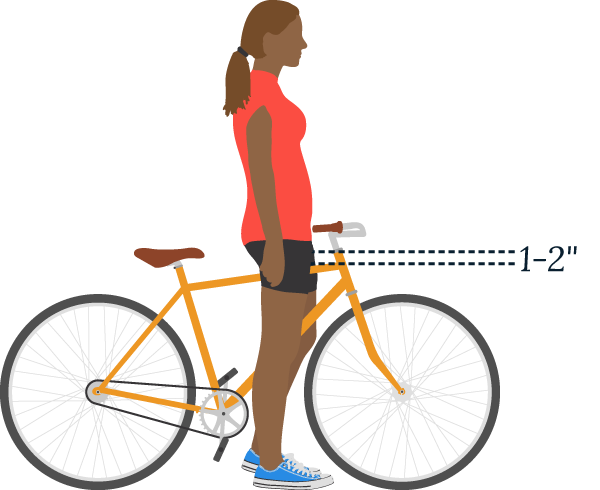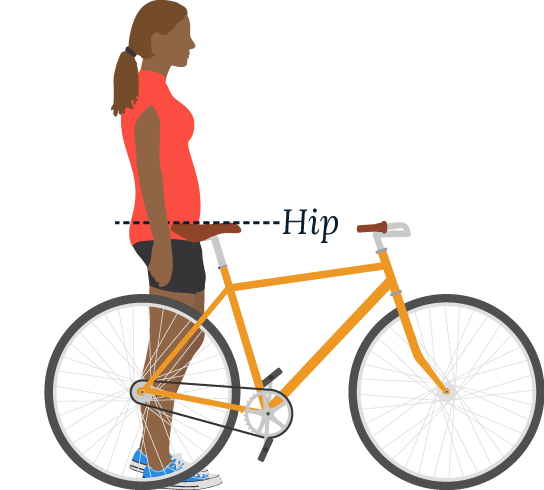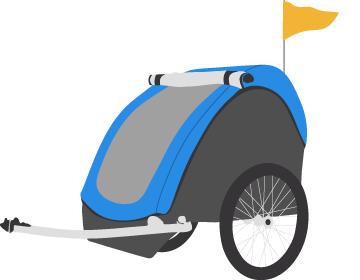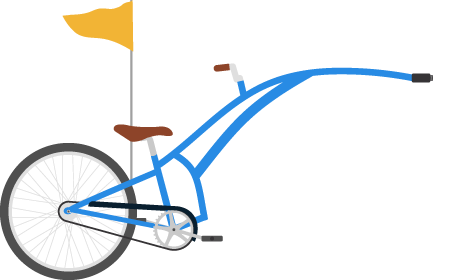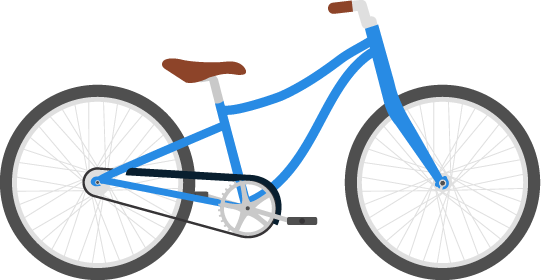Choose a Bike
We've provided information to help you find a bike that's right for you! Thanks to our public bike share system, it's easier than ever to ride a bike without owning one.
Buy a bike
Every bike comes with pros and cons. Follow these steps to find a bike that you enjoy riding, feels comfortable, and meets your needs.
1. Talk with people who bike
Speak with friends, neighbors, or people you see passing by on a bike. Ask them if they’ll share their experiences, what they considered when getting a bike, and any tips they have for you.
2. Answer a few questions
What's your budget?
A used bike will cost less than a new bike of the same quality and ride just as well.
You’ll also need to buy things like lights and a lock. Factor those into your budget. Ask shops if they offer discounts on extra parts and accessories purchased when you buy a bike. Don’t forget batteries for the lights.
What type of bike do you want?
If comfort is your priority, consider an upright bike. If speed is your priority, consider a road bike. Want a mix of speed and comfort? A hybrid may be right for you. Consider a step-through or mixte frame if you don't want to or can't lift your leg over a high top bar, like on a road bike. Folding bikes can go wherever you go. If you can’t sit up on a typical bike seat, look into recumbent bicycles. Consider a tandem if you want to ride with a friend. Tandems are also great for biking with people who don't have good balance or can't see well.
Remember, bikes don’t have genders! Find what works for you.
What will you use the bike for?
Will you bike just for trips around your neighborhood? For commuting? For errands and grocery shopping? Will you be biking with small children?
Consider all of these things before choosing your bike. Be mindful of parts that you may want to add later, like a basket, a rack, saddle bags, child seats, etc.
If you plan to run errands by bike you’ll probably need to carry things. Look for bikes with braze-on mounts so that you can easily add racks. Otherwise, you’ll need to use p-clamps.
Where will you ride?
While Boston is pretty flat, you'll want gears to help with hills. Generally, 3 to 8 gears should be enough.
On bikes with external gearing, the number of gears (or speeds) is determined by multiplying the number of sprockets on the front by the number of sprockets on the back. For example, a 21-speed bike has 3 sprockets in the front and 7 in the back.
Internal gear hubs can offer the same flexibility as external gears, with less hassle. There will be a higher upfront cost, but internal gears need less maintenance over time. They also allow you to shift while stopped, which is helpful if you want to shift to a lower gear while waiting at a red light.
Where will you store your bike?
If you’ll be storing your bike inside and up stairs, be sure to consider the weight of a bicycle. If you have homeowner’s or renter’s insurance, check to see if your bike is covered.
3. Find a bike shop that you like
You’ll probably need to visit a bike shop at least once per year for a tune-up. Find a shop with friendly staff that fits your budget, and where you feel comfortable asking questions.
4. Get the right fit
Find a frame that fits you
Bikes come in different sizes and styles. Frames cannot be adjusted! Make sure the bike frame fits your body. When riding, you should be able to sit on your seat and comfortably reach the handlebars and pedals.
If you’re buying a bike with a diamond frame, you can gauge the fit by standing over the bike. The top bar should be about 1-2 inches (3-5 centimeters) from your body.
Adjust the seat
Find the top of your hip. Stand next to the bike and raise the seat until it’s at the top of your hip.
Proper seat height is an important part of protecting your knees. On most bikes, you should not be able to rest your feet on the ground while sitting on the seat.
You can start with your seat lower and work your way up. Alternatively, consider a crank-forward bike if you always want to have the option of putting your feet on the ground.
5. Go for a test ride
Try out a few different bikes before you invest in one.
Your saddle should get more comfortable over time. Aside from that, anything that’s extremely uncomfortable during a test ride is going to be uncomfortable during every other ride.
Test the bike in a variety of situations. Check the brakes; come to a complete stop a few times. Test the gears; ride up an incline or two. Feel for bumps; ride over some uneven pavement.
6. Make adjustments
As you ride your bike more you’ll probably want to make small adjustments. For example, bike seats can move up/down, forward/backward, and be tilted at various angles. If something starts to feel off, make an adjustment.
Consider bike share
Boston’s public bike share system allows you to grab a bike near your home, office, or school and pedal your way to eat lunch, go shopping, take classes, or visit friends and family.
Bike share is a great option if you:
- aren’t ready to invest in your own bike
- want to ride when your bike is not with you
- want to take one-way trips
- don’t want to worry about locking or storing a bike, or
- don’t know how to or don't want to worry about maintaining a bike.
Keep reading for a brief overview of how to use Boston’s bike share. Learn more at boston.gov/bike-share.
1. Get a pass or membership
Day passes can be purchased at any bike share station and via the mobile app. Monthly and annual memberships may be purchased online. Low-income residents of Boston may be eligible for a discounted membership.
2. Find a bike
Find a bike at a nearby station. Bikes and docks are distributed at stations across metro-Boston. View a map of stations at boston.gov/bike-share-map.
3. Take a bike
Bikes adjust to fit people of all sizes and come with a rack to carry your belongings. Get a ride code from the station kiosk or app, or use your member key (or associated credit card) to unlock a bike.
4. Go for a ride
Thirty-minute rides are included with your pass or membership. Rides over 30 minutes incur additional fees.
5. Return the bike
Dock your bike at any station. Wait for the green light to make sure it's locked. Ride as many times as you want while your pass or membership is active.
Bike with children
Biking is a fun way to spend time with family and friends. If you want to bring children with you, there are a few options for doing so. Remember, anyone 16 years old or younger must wear a helmet when biking.
Trailers
Attach a trailer to the back of your bike and you’ll be able to tow one or two children along with you. Trailers are low to the ground, so you’ll need to add a flag or two to help other people know it’s there.While they do provide a comfortable space for children to sit, they make your bike longer and wider. Practice riding with some inanimate cargo before your first ride with children.
Trailer bike
Trailer bikes attach to your seat post and give a child the experience of riding their own bike. They can pedal or coast along with you. Add flags to help others see the child.Baby seats
You can carry children who are one or older in a baby seat. Some seats are designed to go in the front of the bike, others are designed to go in the back. If the child is in front, you’ll have to reach around them. If they’re in the back they won’t see as much. Ultimately the decision is up to you.Kid’s bike
When a child is ready to ride on their own, get them their own bike. You may want to have them ride in front of you so that they’re always in sight. Start on park paths and residential streets then work up to busier roads.Balance bikes are great for children who are just learning to ride. The bikes don’t have pedals. Children build their skills by sitting on the bike with their feet steadily on the ground, then pushing off and balancing for short distances.
Other Boston by Bike sections
Boston by Bike
An overview of the Boston by Bike guide.
Choose a bike
This is the current page.
Get accessories
We've provided information about some of the most common items that you might want to add to your bike, or get for yourself.
Plan a route
We've provided information to help you figure out the best routes for bike trips. This includes info about taking your bike on the T.
Ride your bike
Here's what to do before each ride, how to ride on Boston's streets, and tips for riding in different weather conditions.
Park your bike
We've provided information on where you should and should not park your bike.
Fix your bike
Learn how to repair your bike or just get a tuned up.
Report a problem, learn the laws
We've summarized information about how to report a bike-related problem and included a summary of the Mass. General Laws about biking.
(Women) learn to ride
We spread the joys of biking and encourage more women and gender-nonconforming people to travel by bike.


